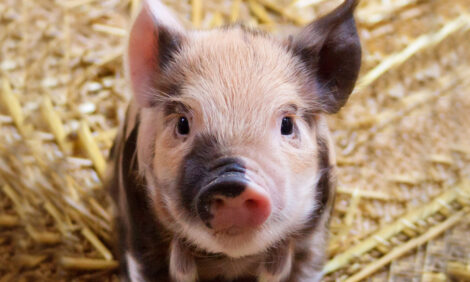



Phytogenic Performance Enhancers in Piglets - Benefits of a Proven Approach
The swine production sector is facing several challenges. The need for optimal feed efficiency, in terms of feed conversion ratios, becomes even more evident in present times of rising prices for feed ingredients.Growing concern about Antibiotic Growth Promoters (AGPs) in animal nutrition has created efforts to use different alternative growth-promoting agents in swine nutrition. Clearly, phytogenics represent a new and exciting group of feed additives, originating from herbs, spices or other plants. An improvement in feed conversion ratio (FCR) has been observed in recent trials conducted in the United States, Europe and South Africa.
Phytogenics affect feed conversion
Optimizing FCR is crucial for efficiency in swine production. Recent results from Kansas State University (USA) have shown significantly improved FCR when pigs were fed phytogenics. The trial was carried out with 192 3-week old piglets (Sulabo et al., 2007) which were assigned to four treatment groups: Group 1 was fed a negative control diet without growth promoters. Groups 2 and 3 received the negative control diet plus phytogenics. Group 4 was offered a positive control diet containing AGPs (140 g/t neomycin sulfate and 140 g/t oxytetracycline HCl). Growth performance was significantly improved over the negative control group when phytogenics or AGPs were added to the feed. In terms of average daily gain, the pigs fed phytogenics were intermediate between the negative control and the AGPs (Figure 1). Feed conversion, however, was best in the groups receiving phytogenics (Figure 2). The phytogenic feed additive under investigation contained a defined blend of essential oils from anise, citrus and oregano, as well as plant extracts.

Figure 1. Effects of phytogenics on average daily gain (Kansas State University)

Figure 2. Effects of phytogenics on feed efficiency (Kansas State University)
The results from Kansas State University confirmed positive observations obtained in previous experiments. A trial conducted in Denmark by Danske Slagterier also showed an increase in performance when the feed was supplemented with phytogenics (Table 1). The feed was pelleted at a minimum temperature of 81 °C.
| Negative Control | Phytogenics | Difference (%) | |
| No. of pens |
24
|
24
|
|
| No. of piglets |
192
|
192
|
|
| Daily weight gain (g) |
422
|
444
|
+ 5.2
|
| Feed intake (FUp1) |
0.84
|
0.85
|
+1.2
|
| Feed conversion ratio |
2.01
|
1.92
|
- 4.5
|
| Danish Production Value |
55.5
|
61.2
|
+ 10.3
|
To continue reading this article click here






